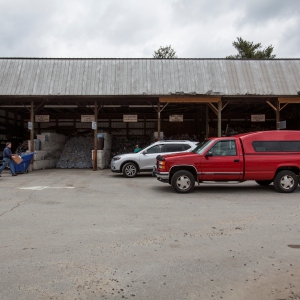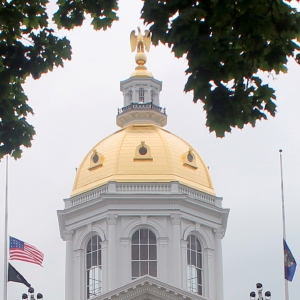The rainbow of birdsong returns
| Published: 04-15-2023 9:00 AM |
At this time of year, when heading outside, I stop and listen. The sounds are changing, every morning there are more bird songs as migrants return from their wintering grounds. Even if you don’t know the specific songs and calls of different species, the volume and diversity of the sounds is noticeably increasing. With each new voice I call out “Welcome Back!”. I’m thrilled with each addition to the spring chorus.
Returning migrants start appearing as early as late February and continue through March in the first of three major waves. The second push comes in early-mid April. But the biggest onslaught will come in May.
To understand why different bird species appear in this predictable parade, it helps to know where the birds spend the winter. The first northbound travelers come from relatively nearby, avoiding the coldest months by doing what human “snowbirds” do, spending winter in the southeastern US. Thus, their trip north is quick, and they often return only to be greeted by snow and cold.
These birds include Red-winged Blackbirds, Common Grackles, American Robins, and Eastern Bluebirds. Sometimes it is hard to distinguish the migrants from the over-wintering birds. Many robins and bluebirds spend the winter in our region now, but with the influx of travelers the numbers grow as the days get longer.
Food is another thing to consider with migrants. Though many early birds eat worms and insects, they can also get by on berries and seeds (sometimes provided by human admirers) until it warms up enough for invertebrates to emerge.
Wetland birds also begin to arrive early, as soon as there is open water. Canada Geese, Mallard and American Black Ducks; Wood, Hooded and Common Mergansers can be seen swimming and dabbling in newly thawed water.
The late March and early April wave brings Killdeers, American Woodcocks, Ospreys, Northern Flickers, Eastern Phoebes and Tree Swallows as well as the first of the wood warblers – Pine, Palm and Yellow-rumped Warblers. As April progresses additional waterfowl appear, Broad-winged Hawks soar in, more swallows flit through the air and sparrows dot the ground as they scratch and peck for seeds and bugs. The winter homes for these species range from in the southern US (woodcocks and flickers) down to Mexico (phoebes) into Central America (Tree Swallows) or the Caribbean (Killdeer).
While that might seem like a long way to fly if you are propelled by feather-covered wings, the true marathoners are the neo-tropical migrants who come all the way from South America. Soon we will begin to see some of these colorful and tuneful marvels.
Article continues after...
Yesterday's Most Read Articles
 Neighboring landowner objection stalls Steeplegate redevelopment approval
Neighboring landowner objection stalls Steeplegate redevelopment approval
 Northeast Coffee Festival comes to Concord this weekend
Northeast Coffee Festival comes to Concord this weekend
 Hopkinton tries to nab out-of-town trash bandits
Hopkinton tries to nab out-of-town trash bandits
 On the Trail: Democrat Maggie Goodlander jumps into race to succeed Kuster
On the Trail: Democrat Maggie Goodlander jumps into race to succeed Kuster
 NH Senate panel frowns on bill to ease vehicle inspection requirements
NH Senate panel frowns on bill to ease vehicle inspection requirements
 Steeplegate project to reopen to public comment as developer seeks to reduce required parking
Steeplegate project to reopen to public comment as developer seeks to reduce required parking
As spring progresses, the composition of birdlife increases in diversity and number. Inflows may arrive like gentle waves lapping on the shore or they may invade suddenly like a storm surge. Severe weather may cause a “fall-out” of birds when migrants are blocked from progressing and they land in large numbers to wait out a storm. These are thrilling occasions for bird watchers.
Early to mid-May is when most of the warblers, orioles, thrushes, Scarlet Tanagers, Rose-breasted Grosbeaks and Indigo Buntings return. If they seem to pop up out of nowhere it’s because these songbirds migrate at night. So, we may go to bed not hearing their sweet whistles but by morning we are serenaded with a song of spring.
It’s easy to imagine they are singing to celebrate the fact that they survived the journey. In fact, they are wasting no time advertising their presence and setting up breeding territories. These creatures that we think of as “our birds” come north for a few short months to raise their young, escaping heavy competition for limited resources in Central America or the Southern Hemisphere’s winter season in South America. They take advantage of longer days in northern latitudes and rich supplies of insects to feed their growing young.
Migrating birds take many risks for the benefits of being here. The journey, whether short or long, is like running an obstacle course of habitat lost, tall buildings, predators and harsh weather. So, keep listening and watching in the coming weeks. When you hear or see the spring arrivals, welcome them back and thank them for the ways they enhance the spring with song, color and many ecological services.


 Adam Montgomery sentenced to minimum 56 years on murder charges in young daughter’s death
Adam Montgomery sentenced to minimum 56 years on murder charges in young daughter’s death Following budget cut, Pembroke revisits future of elementary school re-build
Following budget cut, Pembroke revisits future of elementary school re-build Granite Geek: Free government software for taxes – what could go wrong? (Not much, as it turns out)
Granite Geek: Free government software for taxes – what could go wrong? (Not much, as it turns out)
